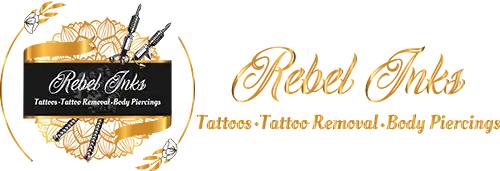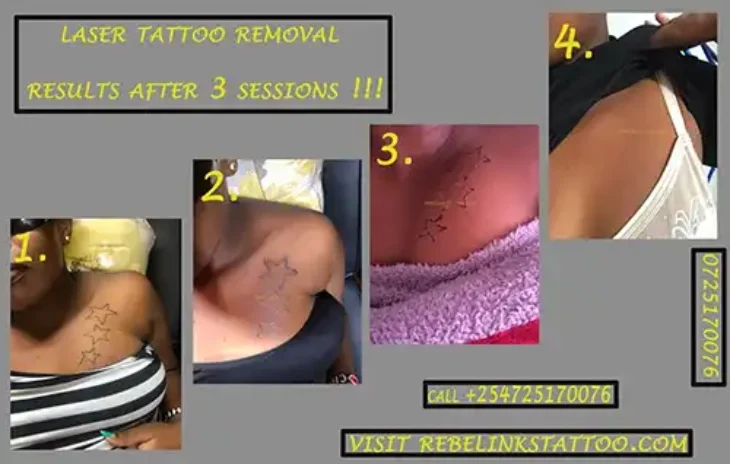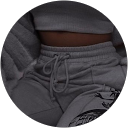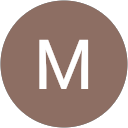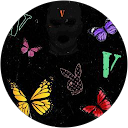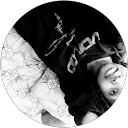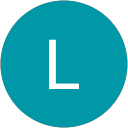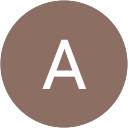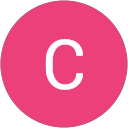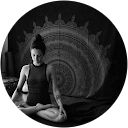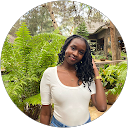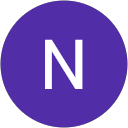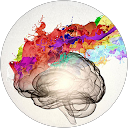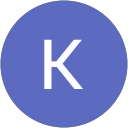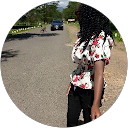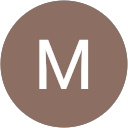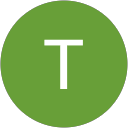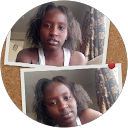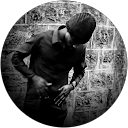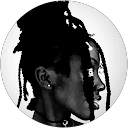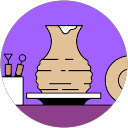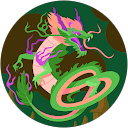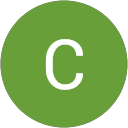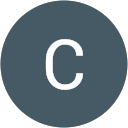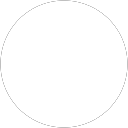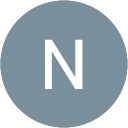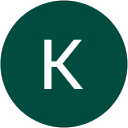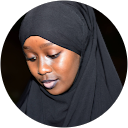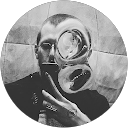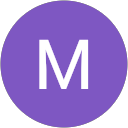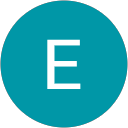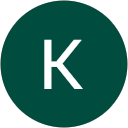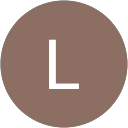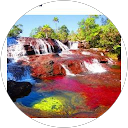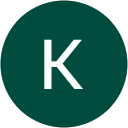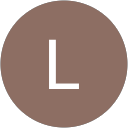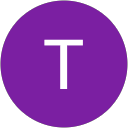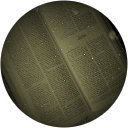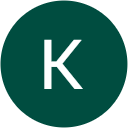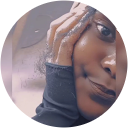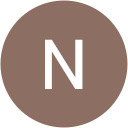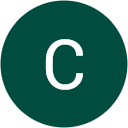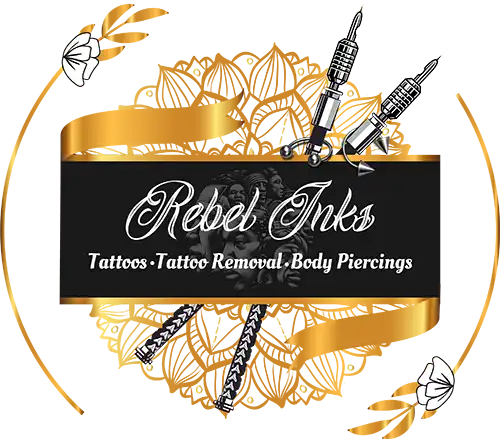Laser Treatment in Nairobi, Kenya
In the ever-evolving world of beauty and skincare, laser treatments have emerged as one of the most effective, science-backed solutions for a wide range of concerns—from tattoo removal and hair reduction to skin rejuvenation and scar treatment. No longer a luxury reserved for celebrities, these high-tech procedures are now widely accessible, at Rebel Inks Tattoos, Tattoo Removal, and Body Piercings Parlour we offer people the chance to achieve clearer, smoother, and more youthful-looking skin with minimal downtime.
Laser Treatment
Unlike traditional skincare methods, which often rely on topical products that take months to show results, lasers use highly focused light energy to target deep layers of the skin, breaking down unwanted pigmentation, stimulating collagen production, or even eliminating hair follicles at the root. Whether you’re struggling with stubborn acne scars, fine lines, unwanted tattoos, or excessive hair growth, there’s a laser solution designed specifically for you.
Types of Laser Treatments and Their Uses
Laser technology has transformed the world of skincare, aesthetics, and medical treatments, offering targeted solutions for various skin concerns, hair removal, and tattoo removal. Here are the main types of laser treatments and what they are used for:
- Laser Tattoo Removal
– Best Laser Type: Q-Switched Nd:YAG, Picosecond Lasers
– Uses: Removes unwanted tattoos by breaking down ink particles, allowing the body to naturally eliminate them.
– How It Works: The laser targets tattoo pigment, shattering it into tiny particles without damaging surrounding skin.
– Sessions Needed: 5–10+ sessions, depending on tattoo size, ink color, and depth.
– Pain Level: Feels like a rubber band snapping against the skin; numbing cream can help. - Laser Hair Removal
– Best Laser Type: Diode, Alexandrite, Nd:YAG, IPL (Intense Pulsed Light)
– Uses: Permanently reduces unwanted hair on the face, arms, legs, underarms, and bikini area.
– How It Works: The laser targets melanin in hair follicles, heating and destroying them to prevent regrowth.
– Sessions Needed: 6–8 sessions for long-term results.
– Pain Level: Mild discomfort, often compared to a warm pinprick. - Skin Resurfacing (Laser Peels & Anti-Aging Treatments)
– Best Laser Type: CO2 Fractional, Erbium YAG, Nd:YAG, Fraxel
– Uses: Reduces fine lines, wrinkles, acne scars, sun damage, and uneven skin tone by removing damaged skin layers and stimulating collagen production.
– How It Works: The laser removes microscopic layers of skin, triggering natural healing and collagen renewal.
– Sessions Needed: 1–3 sessions for visible improvement.
– Pain Level: Moderate; numbing cream is usually applied. - Laser Skin Tightening
– Best Laser Type: Nd:YAG, Infrared Lasers, Fractional CO2
– Uses: Firms sagging skin, boosts collagen production, and improves skin elasticity.
– How It Works: The laser heats deeper layers of the skin, stimulating collagen and elastin production.
– Sessions Needed: 3–6 sessions for optimal tightening.
– Pain Level: Mild warmth; most people tolerate it well. - Laser for Pigmentation & Dark Spots
– Best Laser Type: Q-Switched Nd:YAG, Alexandrite, Fraxel
– Uses: Treats hyperpigmentation, sunspots, melasma, and uneven skin tone.
– How It Works: The laser breaks down excess melanin, which the body then clears naturally.
– Sessions Needed: 2–5 sessions, depending on severity.
– Pain Level: Mild stinging sensation. - Vascular Laser Treatment (For Spider Veins & Redness)
– Best Laser Type: Pulsed Dye Laser (PDL), Nd:YAG
– Uses: Treats spider veins, rosacea, and broken capillaries by targeting blood vessels.
– How It Works: The laser closes off unwanted blood vessels, causing them to fade over time.
– Sessions Needed: 1–3 sessions.
– Pain Level: Mild tingling or heat sensation. - Laser Acne Treatment
– Best Laser Type: Blue Light, Nd:YAG, IPL
– Uses: Reduces active acne, acne scars, and inflammation.
– How It Works: Kills acne-causing bacteria, shrinks oil glands, and reduces inflammation.
– Sessions Needed: 3–6 sessions.
– Pain Level: Mild discomfort, similar to a sunburn. - Laser Stretch Mark Removal
– Best Laser Type: Fractional CO2, Erbium YAG, Pulsed Dye Laser
– Uses: Reduces red, purple, or white stretch marks by stimulating collagen production.
– How It Works: The laser creates micro-injuries in the skin, triggering new cell growth and repair.
– Sessions Needed: 3–5 sessions.
– Pain Level: Mild to moderate.
Key Factors That Affect Laser Treatments
Laser treatments, including tattoo removal, skin rejuvenation, hair removal, and scar reduction, are influenced by several factors that determine their effectiveness and results. Here are the key factors to consider:
- Skin Type & Tone
– Fitzpatrick Skin Type Scale: Different skin types absorb laser energy differently.
→ Lighter skin tones (Type I-III): Respond well to most lasers, lower risk of pigmentation changes.
→ Darker skin tones (Type IV-VI): Require specialized lasers (e.g., Nd:YAG) to avoid burns or hyperpigmentation.
Tip: Use a customized laser setting based on skin type for safety and effectiveness. - Treatment Area (Body Location)
– Areas with good blood circulation (face, arms, chest) heal faster.
– Areas with thinner skin (hands, fingers, ankles) may require lower laser intensity.
– Large areas need longer sessions and more treatments for full results. - Type & Depth of the Target (Ink, Hair, Scar, or Skin Condition)
– Tattoo Removal: Darker inks (black, blue) absorb laser energy better, while lighter colors (yellow, green) need more sessions.
– Hair Removal: Thick, dark hair absorbs more laser energy compared to thin, light-colored hair.
– Skin Rejuvenation: Wrinkles, pigmentation, and scars require different laser types and intensities.
→ Advanced laser technology (Q-switched, Fractional CO2, Nd:YAG) is key to targeting different pigments and skin concerns. - Laser Type & Wavelength Used
– Different lasers target specific issues:
→ Q-Switched Lasers: Best for tattoo removal.
→ Nd:YAG Laser: Works well on darker skin tones and deep pigments.
→ Fractional CO2 Laser: Ideal for acne scars and skin resurfacing.
→ Alexandrite Laser: Effective for lighter skin in hair removal.
→ Diode Laser: Works for most skin types in hair removal. - Individual Healing & Immune Response
– Stronger immune systems help break down pigments faster.
– Lifestyle factors (diet, hydration, exercise) affect healing.
– Smoking & alcohol can slow the removal of ink or pigment.
Tip: Encourage clients to stay hydrated, eat healthily, and avoid smoking for better results. - Pre-Treatment & Aftercare Compliance
– Pre-Treatment: Avoid sun exposure, tanning, and certain skincare products before treatment.
– Aftercare: Follow instructions like using SPF, avoiding heat, and moisturizing properly.
– Skipping aftercare may lead to scarring, hyperpigmentation, or delayed results. - Number of Sessions Required
– Tattoo Removal: 5–10+ sessions, depending on ink type and skin response.
– Hair Removal: 6–8 sessions for long-term results.
– Skin Rejuvenation: 3–5 sessions for visible improvement.
– Scar Reduction: 3–7 sessions depending on depth and severity.
→ Tip: Spacing sessions 4–8 weeks apart allows the body to recover and maximize results. - Pain Tolerance & Comfort Options
– Laser treatments feel like a rubber band snap or mild burning sensation.
– Numbing cream, cooling devices, and lower intensity settings can help with discomfort.
– Pain varies based on the area being treated (bony areas hurt more).
Laser treatments offer customized solutions based on skin type, concern, and desired results. Whether you’re looking for tattoo removal, hair reduction, skin rejuvenation, or pigmentation correction, choosing the right laser technology ensures safe and effective outcomes.
Laser Treatment Procedure: What to Expect from Start to Finish
Whether you’re getting laser hair removal, tattoo removal, skin resurfacing, or pigmentation correction, understanding the procedure can help you feel prepared and confident. While different treatments vary in duration and intensity, most follow a standard process from consultation to aftercare.
- Step 1: Consultation & Skin Assessment
– Why It’s Important: Ensures the treatment is safe and effective for your skin type and concern.
– At Rebel Inks Tattoos, Tattoo Removal, and Body Piercings our laser specialist will:
→ Examine your skin type, condition, and treatment area.
→ Discuss your goals, medical history, and possible side effects.
→ Perform a patch test (in some cases) to check for skin reactions.
→ Recommend the right laser type, intensity, and number of sessions needed. - Step 2: Pre-Treatment Preparation
– Why It’s Important: Reduces risks and enhances laser effectiveness.
– Before the procedure, you may be advised to:
→ Shave the treatment area (for laser hair removal).
→ Avoid waxing or plucking (for hair removal) since the laser targets hair follicles.
→ Stop using skincare products with harsh chemicals.
→ Skip tanning & sun exposure for 2–4 weeks before treatment. - Step 3: Laser Treatment Session
– What Happens During the Procedure:
→ Skin Cleansing – The treatment area is cleaned to remove oils, dirt, or residue.
→ Numbing (If Needed) – A numbing cream may be applied, especially for tattoo removal or skin resurfacing.
→ Protective Gear – You’ll wear protective goggles to shield your eyes from the laser light.
→ Laser Application – The laser device is adjusted to the correct wavelength and intensity, and pulses of light are delivered to the skin.
→ Cooling & Soothing – Some lasers have built-in cooling systems; others may require a cooling gel or ice packs to reduce discomfort.
– What It Feels Like:
→ Laser Hair Removal – Feels like a rubber band snapping against the skin.
→ Tattoo Removal – A sharp, stinging sensation (numbing is often used).
→ Skin Resurfacing – A warming or mild burning sensation.
→ Pigmentation Removal – Tingling or mild discomfort.
– Treatment Duration:
→ Small areas (upper lip, underarms) – 5–15 minutes
→ Medium areas (face, arms, bikini) – 20–40 minutes
→ Large areas (legs, back, full chest) – 45–90 minutes - Step 4: Post-Treatment Care & Recovery
– Why It’s Important: Prevents irritation, enhances results, and speeds up healing.
– Common After-Effects:
→ Redness, mild swelling, or sensitivity (usually fades within hours to days).
→ Slight peeling (for resurfacing treatments).
→ Darkening of pigmentation before fading (for tattoo/pigmentation removal).
– Aftercare Tips:
→ Apply soothing creams (like aloe vera or prescribed ointments).
→ Avoid direct sun exposure and use SPF 30+ sunscreen daily.
→ Skip hot showers, saunas, and sweating for at least 24–48 hours.
→ Avoid harsh skincare products (retinoids, exfoliants) for a few days.
→ Do not scratch or pick at treated areas to prevent scarring.
– Healing Time:
→ Laser Hair Removal: Mild redness lasts a few hours.
→ Tattoo Removal: Skin heals in 7–14 days, but ink fades over months.
→ Skin Resurfacing: Peeling and redness last 5–10 days.
→ Pigmentation Removal: Dark spots fade over 1–2 weeks. - Step 5: Follow-Up & Maintenance
– Why It’s Important: Ensures long-term results and proper healing.
– Number of Sessions Needed:
→ Hair Removal – 6–8 sessions for long-term results.
→ Tattoo Removal – 5–10+ sessions (depends on ink color & depth).
→ Skin Resurfacing – 1–3 sessions for visible improvement.
→ Pigmentation Removal – 2–5 sessions to fade dark spots.
– When to Schedule Next Session:
→ Most treatments require 4–8 weeks between sessions to allow the skin to heal.
→ Maintenance sessions may be needed once or twice a year for lasting results.
Laser Treatment Aftercare: How to Heal Faster & Maximize Results
Proper aftercare is essential for achieving the best results from your laser treatment. Whether you’ve had laser hair removal, tattoo removal, skin resurfacing, or pigmentation correction, following these post-treatment guidelines will help you heal faster, prevent side effects, and maintain long-term benefits.
Immediate Aftercare (First 24-48 Hours)
Why It’s Important: The skin is highly sensitive after laser treatment, so protecting it from irritation, heat, and bacteria is crucial.
What to Expect:
- Redness, mild swelling, or a warm sensation (similar to a sunburn).
- Some dryness, flaking, or slight peeling (especially for skin resurfacing).
- Darkening of pigmentation before fading (for tattoo & pigmentation removal).
- Do’s:
– Apply cool compresses or ice packs to soothe discomfort.
– Use a gentle, fragrance-free moisturizer or prescribed cream.
– Drink plenty of water to stay hydrated and support skin healing.
– Sleep with your head slightly elevated (for facial treatments) to reduce swelling. - Don’ts:
– Avoid hot showers, steam rooms, and saunas.
– No harsh skincare products (retinoids, exfoliants, or acids).
– Avoid touching, scratching, or picking at the treated area.
– Skip makeup on treated skin for at least 24 hours.
Sun Protection (Crucial for All Laser Treatments!)
Why It’s Important: Laser-treated skin is extra sensitive to UV rays, increasing the risk of hyperpigmentation and irritation.
- Golden Rule:
– Always wear SPF 30+ sunscreen (even indoors) and reapply every 2-3 hours.
– Wear a hat & sunglasses when going outside.
– Avoid direct sun exposure for at least 1-2 weeks.
– No tanning or self-tanners for at least 2-4 weeks.
Specific Aftercare by Treatment Type
- Laser Hair Removal
– Redness & swelling may last a few hours.
– Use aloe vera gel or a light moisturizer to soothe the skin.
– Avoid waxing, plucking, or threading—let the treated hair fall out naturally.
– Exfoliate gently after 5-7 days to help hair shed. - Laser Tattoo Removal
– The skin may form blisters, scabs, or light bruising—this is normal.
– Apply antibacterial ointment and cover with a bandage for the first few days.
– Keep the area dry and clean, avoiding excessive moisture.
– Let scabs fall off naturally—don’t pick them! - Skin Resurfacing (CO2, Fractional, Erbium Lasers)
– Expect peeling, dryness, and redness for 5-10 days.
– Apply healing ointments (like Aquaphor) as directed.
– No harsh scrubs or exfoliants for at least 2 weeks.
– Keep skin hydrated & protected with SPF. - Pigmentation & Dark Spot Removal
– Treated areas may darken before fading (this is normal).
– Avoid scrubbing or exfoliating for a week.
– Use brightening serums (as recommended) after healing. - Vascular Laser (Spider Veins, Redness, Rosacea)
– Treated veins may darken before disappearing.
– Avoid alcohol, hot showers, and extreme heat for a few days.
Get In Touch
For more information on the list above and any other special services,please call or come in for free consultation
Testimonials
I recommend them 💯
I would definitely recommend if you’re thinking of getting a piercing!
The staff were super friendly, explained everything clearly, and made me feel so at ease. They answered all my nervous questions (and I had many questions),
They walked me through the whole process, gave detailed aftercare instructions, and even followed up afterward to check how I was healing 🫶
Clean, professional, and full of good vibes.
Would 100% recommend . Definitely making a second trip here.
This was the second tattoo I got and I wish I could have come to Eric for my first one! He gave me really great after-care directions for the tattoo as well as a little jar of his own Vaseline-type stuff to put over my tattoo while it was healing! He even put second skin over my tattoo so that I didn’t have to worry about it for the first few days. Now THAT’S good service. My first tattoo artist didn’t do none of that lol.
After the session Eric didn’t rush me and my friend out, he chatted with us and even when he found out I was an artist too— really encouraged me to keep creating and to find a community of artists to support me. I almost cried because I’ve had such a hard time with my own art the past couple of years, it meant so much to me to have a fellow very talented artist say that to me. 🤍🤍🤍
Eric you’re amazing, don’t ever stop creating and just know you’ve impacted lives all over the world!🫶🏻 thanks so much for everything!!
From the moment I walked in, Eric was professional, welcoming, and attentive. He made sure I was comfortable throughout, provided everything I needed, and explained every step of the process. The tattooing itself was unbelievably smooth - I genuinely felt no pain compared to my previous tattoos over the last 22 years.
Eric also gave me excellent aftercare guidance and products, and thanks to that, my tattoo healed beautifully. The attention to detail, precision, and shading are absolutely stunning. This is hands-down the best tattoo I've ever had, and I will be flying back to Nairobi for any future ink.
If you want incredible art, a professional experience, and a talented artist who truly cares about his clients, Rebel Ink is the place to go!
From start to finish, the service was exceptional. The piercer was professional, knowledgeable, and made me feel completely comfortable. The cleanliness of the place was above and beyond — everything was spotless and hygienic, which really put me at ease. Highly recommend for anyone considering a piercing!
Shout out to Eric😘
We ended up changing the jewelry three times to ensure I had the best fit and avoided any signs of rejection, and he always listened to my suggestions as a client, which I really appreciated. Now, three months in, my piercing is healing beautifully, with no sign of rejection. Highly recommend for anyone who values a piercer who cares about your comfort and healing journey!
What stood out the most was the aftercare Eric checked in with me even three weeks later to see how the tattoo was healing. That kind of follow-up shows how much he truly cares about his work and his clients.
I’m very satisfied and will definitely be coming back for my next piece. Highly recommend!
The piercing wasn't as painful as I had thought and the process was quick and satisfactory. I love it!!!
The piercing is healing well thanks to the aftercare instructions and follow-up. I would highly recommend Rebel Inks
Eric also did a belly button piercing for a friend, guiding her through the process, doing the piercing and then explaining the after care to her.
The shop is on the 3rd floor, with the entrance to the stairs near an alleyway on the left. The shop is perfect size, clean, and attractive looking. The mural is pretty dope.
Thank you for the amazing service! 🔥👅✨
I got piercibgs there and the process was really good. My biggest concern was hygiene but that wasn't an issue at all, they use new needles and they sanitize them.
The service itself was also welcoming.
I was informes of everything i needed to know beforehand.
10/10 would recommend!
Eric was so calm and patient with my almost 2 year old lady. It was such a clean and hygienic process. We will definitely be back for our second rounds of piercings and maybe even another tattoo!
They assess the area before any art and advise one accordingly. They also give one post clean up process and also do a check up after the body art projects. Overall, I loved my experience and I’m hooked. 👍
Will definitely come back next time I’m in town 🙂
He listened to what I actually wanted and made sure he could fit in the time before I flew back home.
The shop is clean & private and is easy enough to find.
Eric has even checked in a couple of times since to make sure all is good.
I would totally recommend Eric! I absolutely love my Elephants!
I had a very easy healing period and always follow up from Eric to check on my progress...I would highly recommend if you are a first timer because from my experience all went very well and attention to detail
Thank you for a good job and looking forward to send all my friends your way
And all the best with the new year 2025!
From the moment I walked in, the staff was super friendly and made me feel at ease. The studio had a clean, professional atmosphere, which immediately put me at ease. My piercer was incredibly skilled and explained every step of the process, ensuring I was comfortable the entire time. The piercing was quick and practically painless, and the aftercare instructions were clear and easy to follow. I can tell they really care about the health and safety of their clients.
Overall, a fantastic experience—I highly recommend Rebel Inks and Tattoos for anyone looking to get pierced or tattooed!
They do follow up after their services
Eric's Studio isn’t just a place to get a tattoo—it’s an experience. The combination of professionalism, artistic talent, and a welcoming environment makes it a standout destination for anyone considering a tattoo.
I highly recommend Eric’s Studio to both first-timers and seasoned tattoo enthusiasts. If you’re looking for a high-quality tattoo and an enjoyable experience, this is the place to go.
I would definitely recommend their services again and again
Thank you Rebel Ink
My piercings are healing ❤️🩹 well
I would 💯 recommend
I will definitely come back for more .
Two, all the equipments he used for the piercings were new and/or sterilised.
Three, the parlour itself was very clean and was up to par with the hygiene standards.
Four, Eric provided effective aftercare instructions, making sure I knew exactly how to take care of my new piercings and he kept in touch and continues to do so, to check on the healing progress.
I highly highly highly recommend this place!!!
Would definitely recommend them to friends and go back for other piercings
Not only was the piercing process smooth, but he also provided thorough aftercare instructions, making sure I knew exactly how to take care of my new piercings. What really impressed me was that he keeps in touch to check on how the healing is progressing – a sign of true care for his clients.
The shop maintains a high standard of hygiene, and the atmosphere is welcoming and comfortable, which really added to the positive experience. I highly recommend this place to anyone looking for a professional and caring experience. I’ll definitely be coming back for any future piercings!
My appreciation for the excellent customer service I received. The follow-ups were prompt, and I truly appreciated the gentleness and professionalism throughout. Thank you!"
"Looking for professional eyebrow microshading removal? Look no further!"
The customer care is top tier 👌🏾👌🏾.
Wonderful place to get tattoos and piercings. 💯💯
Eric goes ahead to follow up on his clients progress and gives good advice each time I reach out to him.
I would recommend Reble tattoos anytime.
Good job bro we really appreciate.
Ohh and the price is very fair.
The environment was clean , procedure was sterile and the jewelry used are of the best quality.
He followed up with me during the healing process, he educated me on what I needed to do for my aftercare.
Eric is confident, skilled , experienced and the best piercer. Highly recommend Rebel inks.✨
Definitely recommend!
Great experience.
Eric definitely know what he is doing .
I got exactly what I wanted 2 tiny tats on the same finger .
He was kind and patient throughout the session.
Healing process has been good .
Aftercare services were given and regular checkups on the healing process were done.
I would 💯recommend.
Eric gave me the best reception as it was my first time there,and made me trust him all the way. I appreciate good services.
There services are also affordable not to forget 😊.
He was also invested in the aftercare and would ensure I follow the do's and don'ts in taking care of the tattoo and ensuring proper healing and maximum ink retention.
Would highly recommend Rebel Inks Tattoos.
Rebel Inks Tattoo offer the best,affordable and quality tattoo removal services.If you have unwanted ink,choose Rebel Inks Tattoo,they're the best of the best and the professionalism is a top notch.They ensure you're free from unwanted ink with their Laser Tattoo Removal Technology...
I did a Laser Tattoo Removal with them and i can attest they're the best....
Kudos Eric...
I highly recommend.
It was a generally good experience with good hygiene during the piercing process and has been a smooth healing process.... 10/10
tips. Highly recommend 👍🏽
100% recommendable.
I was particularly impressed with Eric's attention to hygiene. He thoroughly cleaned the room before I entered, sanitized all of the equipment he would be using, and changed gloves between each ear. This level of cleanliness gave me great confidence in his professionalism.
Eric's commitment to customer service did not end on the day of the piercing. He followed up with me regularly throughout the healing process to ensure that I was following the aftercare instructions and that my earlobes were healing properly.
I highly recommend Rebel Inks to anyone in Nairobi who is considering getting a piercing. Eric is a highly skilled and experienced piercer who takes great pride in his work.
So I Check all the boxes below and more:
Customer Care: ✔️
Professionalism : ✔️
Cleanliness ✔️
Price: ✔️
After care service ✔️
Thanks and good job, Eric
The place is neat and clean and the equipments he used were also fine standards. Really appreciate his following up with me on the healing 🤗
I WOULD HIGHLY RECOMMEND THEIR SERVICES to everyone. Actually what you see on their website is EXACTLY what you will get. Keep up the good work Rebel inks Tattoos.
The infection is now gone. I would definitely recommend!
Can recommend this place totally and would go back there anytime!
Thanks!
OUR LOCATION
Areas We Serve
NAIROBI
KIAMBU
KAJIADO
MACHAKOS
